Consumed: stilled lives - Blyth Gallery
Woolley, Dawn 
Abstract
Consumed: Stilled Lives plays with the traditional concept of still-life painting, which grew in popularity in the 16th and 17th centuries. Often featuring silver plates, ornate glassware and expensive foodstuffs such as shellfish and exotic fruit, still life paintings became a fashionable way for the Dutch and Flemish to illustrate their wealth. When interpreted using emblematic symbolism the paintings represent a conflicting relation with material wealth. In response to this reading Woolley produces still-life objects that suggest contradictory relationships to contemporary consumer culture. Drawing on both definitions of the term ‘consume’ (to ingest and to purchase) she uses food still-life photography to represent different characters and positions in relation to capitalist society. What we eat and how we eat are symbols of our wider consumer habits. We are what we consume. In addition to photographs and installation this exhibition presents a series of still life objects installed in vitrines. The Celebrate installations suggest the conviviality of a feast but the materials used to make the food disrupt this reading. The objects were produced in response to research into the visualisation of food in eating disorders. Food is imagined to be drained of colour and aroma to help suppress desire. The food is inedible, eradicating its value as food. In the white installation (objects produced in 2012 with supported by a training grant from the Arts Council of Wales), the food is made of the same porcelain as the containers, raising the food to the status of a crafted and delicate object. The grey party food is made of concrete, a common, inexpensive material. The black banquet is made from plastic, material that will not break-down, it is indigestible. The different materials evoke the shifting status of food in the lives of eating disorder sufferers, in turn object of disgust and obsession. Two new installations ‘Barmecide Feast’ devised for the exhibition at Blyth Gallery, are named after Barmecide, a prince in Arabian Nights. Barmecide invites a beggar to a feast, but serves only imaginary food. The beggar plays along, acting as though he were intoxicated by the imaginary wine and hitting the host during a drunken brawl. Eventually the beggar is rewarded with real food. The Barmecide feast has become a name for situations, in which promises are made but not delivered and acts of generosity that are no more than illusions. In the installations the illusion of plenitude and extravagance is undermined by the material of the food. The overabundance of newspaper headlines are intended to leave an unpleasant taste in the mouth, and invoke ideas of food insecurity.
Actions (login required)
 |
Edit Item |

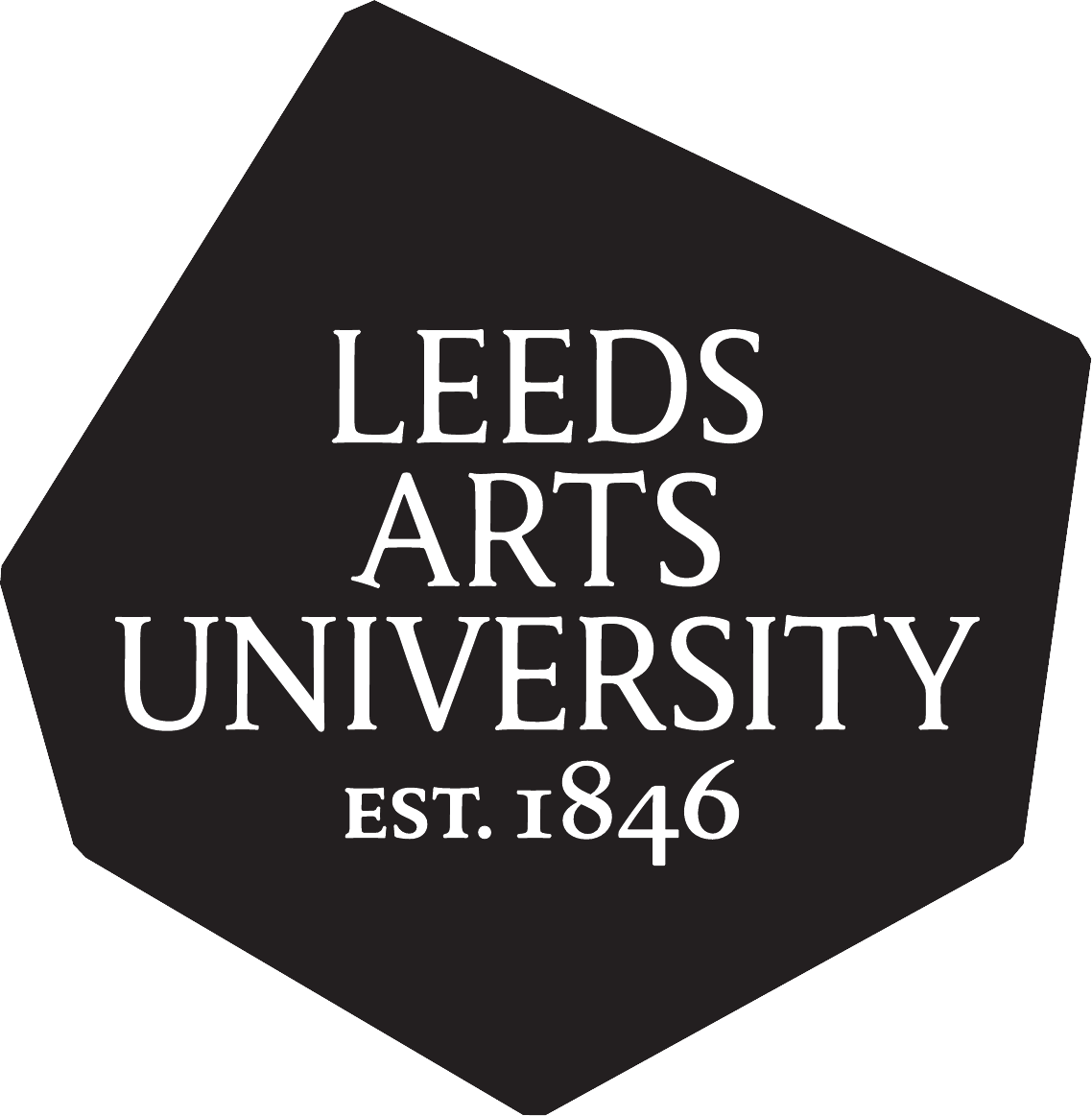
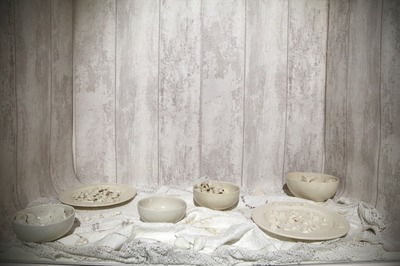
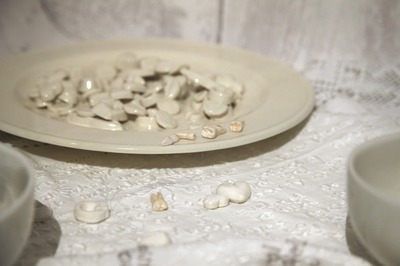


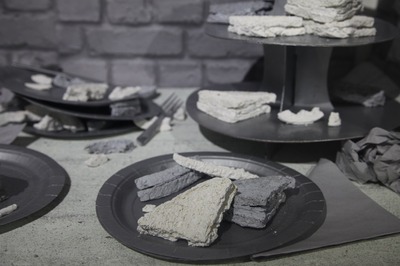
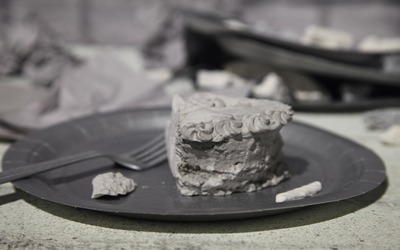
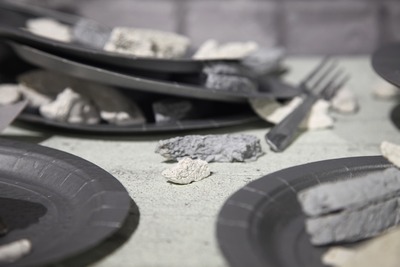
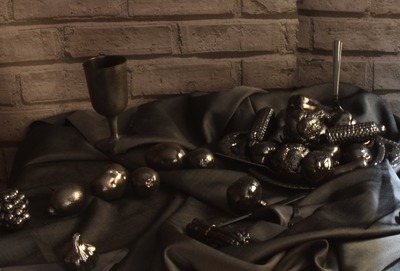
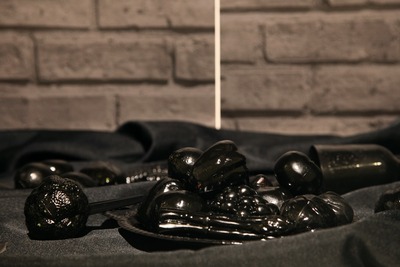
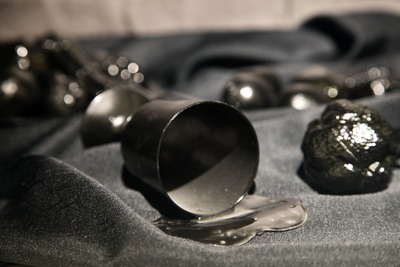
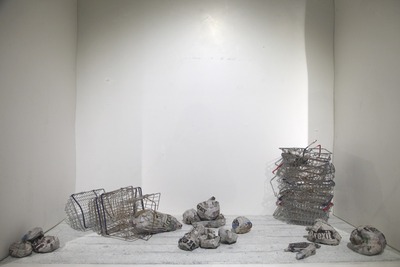

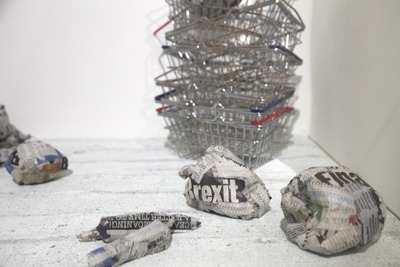
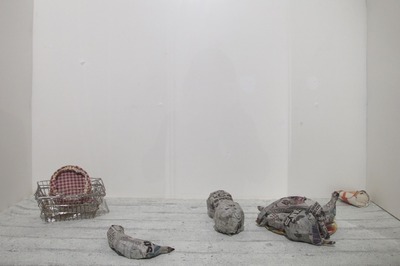


![[img]](https://lau.repository.guildhe.ac.uk/17328/11.hassmallThumbnailVersion/D%20Woolley%20Consumed%20Stilled%20Lives%20Blyth%20Image%201.jpg)
![[img]](https://lau.repository.guildhe.ac.uk/17328/12.hassmallThumbnailVersion/D%20Woolley%20Consumed%20Stilled%20Lives%20Blyth%20Image%202.jpg)
![[img]](https://lau.repository.guildhe.ac.uk/17328/13.hassmallThumbnailVersion/D%20Woolley%20Consumed%20Stilled%20Lives%20Blyth%20Image%203.jpg)
![[img]](https://lau.repository.guildhe.ac.uk/17328/14.hassmallThumbnailVersion/D%20Woolley%20Consumed%20Stilled%20Lives%20Blyth%20Image%204.jpg)
![[img]](https://lau.repository.guildhe.ac.uk/17328/15.hassmallThumbnailVersion/D%20Woolley%20Consumed%20Stilled%20Lives%20Blyth%20Image%205.jpg)
![[img]](https://lau.repository.guildhe.ac.uk/17328/16.hassmallThumbnailVersion/D%20Woolley%20Consumed%20Stilled%20Lives%20Blyth%20Image%206.jpg)
![[img]](https://lau.repository.guildhe.ac.uk/17328/17.hassmallThumbnailVersion/D%20Woolley%20Consumed%20Stilled%20Lives%20Blyth%20Image%207.jpg)
![[img]](https://lau.repository.guildhe.ac.uk/17328/18.hassmallThumbnailVersion/D%20Woolley%20Consumed%20Stilled%20Lives%20Blyth%20Image%208.jpg)
![[img]](https://lau.repository.guildhe.ac.uk/17328/19.hassmallThumbnailVersion/D%20Woolley%20Consumed%20Stilled%20Lives%20Blyth%20Image%209.jpg)
![[img]](https://lau.repository.guildhe.ac.uk/17328/20.hassmallThumbnailVersion/D%20Woolley%20Consumed%20Stilled%20Lives%20Blyth%20Image%2010.jpg)
![[img]](https://lau.repository.guildhe.ac.uk/17328/21.hassmallThumbnailVersion/D%20Woolley%20Consumed%20Stilled%20Lives%20Blyth%20Image%2011.jpg)
![[img]](https://lau.repository.guildhe.ac.uk/17328/22.hassmallThumbnailVersion/D%20Woolley%20Consumed%20Stilled%20Lives%20Blyth%20Image%2012.jpg)
![[img]](https://lau.repository.guildhe.ac.uk/17328/23.hassmallThumbnailVersion/D%20Woolley%20Consumed%20Stilled%20Lives%20Blyth%20Image%2013.jpg)
![[img]](https://lau.repository.guildhe.ac.uk/17328/24.hassmallThumbnailVersion/D%20Woolley%20Consumed%20Stilled%20Lives%20Blyth%20Image%2014.jpg)
![[img]](https://lau.repository.guildhe.ac.uk/17328/25.hassmallThumbnailVersion/D%20Woolley%20Consumed%20Stilled%20Lives%20Blyth%20Image%2015.jpg)
![[img]](https://lau.repository.guildhe.ac.uk/17328/26.hassmallThumbnailVersion/D%20Woolley%20Consumed%20Stilled%20Lives%20Blyth%20Image%2016.jpg)